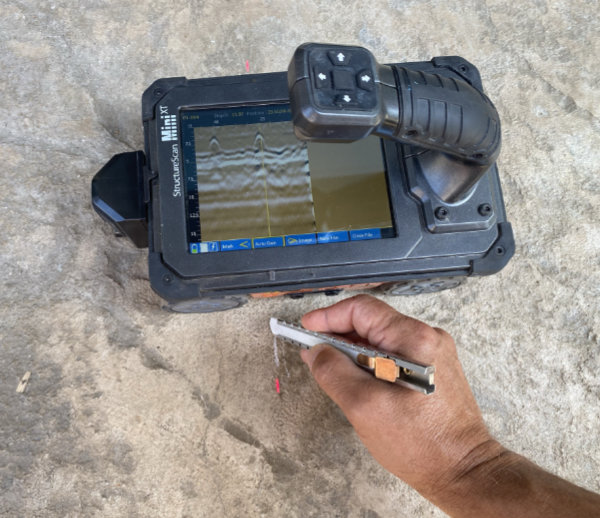Concrete is one of the most commonly used materials in construction. It’s durable, strong, and able to support heavy loads. But when it comes to reinforcing concrete slabs, there are two main options: post-tension cables and rebar. Both methods have their advantages and disadvantages, and it’s important to choose the right one for your project. In this blog post, we’ll compare the use of post-tension cables versus rebar in concrete slabs and explain how to best use a concrete scanner in the process.
The Importance of Reinforcing Concrete Slabs
Before we delve into the details of post-tension cables and rebar, let’s first explore why reinforcing concrete slabs is important. Concrete is strong in compression but weak in tension. When a slab is subjected to a heavy load, it can crack or even collapse if it doesn’t have adequate reinforcement. Reinforcing the slab with either post-tension cables or rebar helps to distribute the load evenly and prevent the concrete from cracking or failing.
Post-tension cables: Pros and Cons
Post-tension cables are high-strength steel cables that are inserted into the concrete slab before it is poured. The cables are tensioned after the concrete has set, which compresses the concrete and increases its strength. Post-tension cables have several advantages over rebar:
- They reduce the amount of concrete required, which makes the slab lighter and more cost-effective.
- They allow for longer spans between support columns, which can reduce the number of columns required and increase the usable space.
- They provide greater resistance to seismic activity and other natural disasters.
However, there are also some disadvantages to using post-tension cables:
- They require skilled labor to install and tension properly.
- They can be difficult to repair if they fail.
- They are more expensive than rebar.
Rebar: Pros and Cons
Rebar is made of steel bars that are placed in the concrete slab before it is poured. The bars are spaced apart and are typically arranged in a grid pattern. Rebar has several advantages over post-tension cables:
- It’s easy to install and does not require skilled labor.
- It’s easy to repair if it fails.
- It’s less expensive than post-tension cables.

However, there are also some disadvantages to using rebar:
- It requires more concrete, which makes the slab heavier and more expensive.
- It can be difficult to install in areas with complicated shapes or tight spaces.
- It may not provide enough resistance to seismic activity and other natural disasters.
Using a Concrete Scanner
No matter which method you choose, it’s important to ensure that the reinforcement is properly installed and located in the correct place. This is where a concrete scanner comes in. A concrete scanner is a tool that uses electromagnetic waves to detect the location of reinforcement within a concrete slab. It can help you to:
- Ensure that reinforcement is properly spaced and installed.
- Avoid cutting through reinforcement when making openings in the slab.
- Detect voids or areas of low concrete cover that could compromise the strength of the slab.


To best use a concrete scanner, follow these tips:
- Choose the right scanner for your project. There are several types of concrete scanners available, each with different capabilities and price points.
- Familiarize yourself with the scanner and its software. Practice using it on a known reinforced slab to get a feel for how it works.
- Take multiple scans from different angles and locations to ensure accuracy.
- Interpret the data carefully and consult with a structural engineer if needed.
Wrapping it all up
When it comes to reinforcing concrete slabs, both post-tension cables and rebar have their advantages and disadvantages. It’s important to choose the right method for your project based on factors such as cost, load requirements, and seismic activity.
But, when working on an existing concrete slab, you may not know what reinforcement method was used. That is where Spearhead Locating Services can help you with your concrete scanning needs.
Whether you’re coring or cutting a trench in a concrete slab, using a concrete scanner can help to ensure that the reinforcement was properly installed at the correct spacing and depth. Let us locate the reinforcement before you make your first cut.





0 Comments